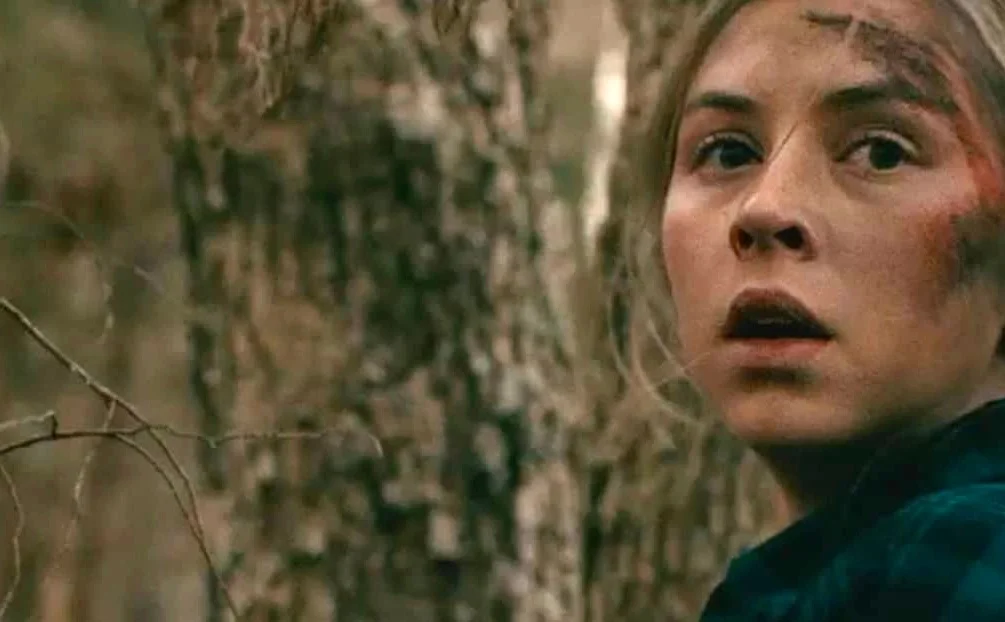Things Aren't Always As They Seem in Rust Creek
Source: IFC Films
For most of movie history, the victims of film are nearly always women. Most of these victims are written and directed overwhelmingly by men. When this happens, we always see females from the male perspective, i.e., how they should look, act and feel according to men.
In the thriller Rust Creek, we find yet another female victim, but this time, the “victim” fights back. Refreshingly directed and written by women, the main character Sawyer (Hermione Corfield), and most of the film, turns out to be much more than meets the eye.
Toxic Masculinity
The cornerstone to most thrillers or horror that feature women as victims, is the societal idea that men are stronger and better than women. This long held “boys will be boys” mentality drives this myth and it has been propagated in stories throughout time. As such, this myth has flourished and is widely accepted. We see it time and time again in myriads of ways in all forms of media.
Rust Creek starts out seemingly driving the same way we’ve seen countless horrors and thrillers, but, it dares to actually take on the status quo and make the audience rethink some of the carbon-copied, tired stereotypes in multiple ways.
Sawyer is an overachieving, athletic, college senior on her way to a dream job interview. Coming from Kentucky and having to drive to Washington DC on Thanksgiving weekend, she decides to skip the usual jammed traffic patterns and finds herself on a dubious route through the Appalachians. Now, anyone who’s tried to use their GPS through the mountains knows that if the GPS has to re-route you for any reason, you’re literally up the creek without a paddle.
When the roads lead her to a series of barricades and she fails to get a signal on her phone, she attempts to read an old map she has in the glove box. Why she feels the need to get out of her vehicle to look at it is just one of the many questionable mistakes she makes throughout the film. Enter the toxic male yokels, sadistic Hollister (Micah Hauptman) and Buck (Daniel R. Hill), to harass her. This is the first place the film and it’s protagonist start down a unique, winding path of the unexpected.
Source: IFC Films
Sawyer fights both men back in an attempt to save herself. She doesn’t just cower and scream like most female victims in film. She manages to escape them, even after Buck stabs her leg, leaving them with some deleterious wounds of their own. Her problems escalate from here as she enters a massive mountain forest with no idea which way is which. She is in their territory now, and the November cold, with an open wound and only the clothes on her back.
No One To Trust
When Commander Slattery (John Marshall Jones), a state trooper sees Sawyer’s “abandoned” vehicle, he alerts local Sheriff O’Doyle (Sean O’Bryan) and asks him to investigate it. O’Doyle’s dutiful deputy, Katz (Jeremy Glazer), jumps on the chance to investigate anything in their sleepy town, but O’Doyle seems averse to let him. When Katz takes it upon himself to investigate further, he discovers that his reality isn’t what he thought it was.
Meanwhile Sawyer, after playing a seeming unending game of cat and mouse with Hollister and Buck, passes out from blood loss and fatigue. She is found by loner Lowell (Jay Paulson), who takes her in and fixes her wounds.
Upon awakening, she is visibly shaken, leery of Lowell and ill from blood loss but she is forced to trust him in order to recover. In another way the narrative challenges the status quo, Sawyer finds she has much to learn from Lowell, who is someone less formally educated than herself. Though the odd pair forge a makeshift alliance, Sawyer’s success is far from guaranteed with mounting antagonists, both known and unknown, closing in all around her.
Throughout the story her prejudices and assumptions are repeatedly challenged as she navigates a twisted terrain for survival.
Source: IFC Films
When Women Lead
As a cinephile and Film Critic I’ve seen countless films. Because film has been a mostly male dominated industry, female directed and written films have been few and far in between. As a critic, I’ve noticed some pretty remarkable differences between male versus female made films.
The most palpable is content significance. No matter what gender is being portrayed onscreen, women tend to create more characters with far greater range, depth and intricacy. There is almost always more to each character’s story; the characters are more genuine and relatable; more of the characters, good or bad, struggle with complex personal issues, instead of just representing generic archetypes and they exhibit greater emotional authenticity.
Rust Creek is no exception. Director Jen McGowan leads a powerhouse trio of visual storytellers with an unexpectedly complex script by Julie Lipson, coupled with the bleak, desolate imagery of a bare winter forest by cinematographer Michelle Lawler, that mimics the profound lack of warmth and opportunity the small community holds. Throw in an astutely played Sawyer by Cortfield and, what looks on the surface to be a film we’ve seen a thousand times, turns out to be a multi-layered, multifaceted convolution of curve balls and metaphor.
The film stumbles with a bit of slow pacing at times, but even that gives the audience a chance to get to know the characters a bit more and leads us deeper into it’s serpentine, yet interconnected world. It is cleverly crafted and proof that women can deliver in thrillers.
Not that I needed convincing of that.
Rust Creek is in select theaters in the US and available to stream on iTunes and Prime Video, January 4th, 2019.


